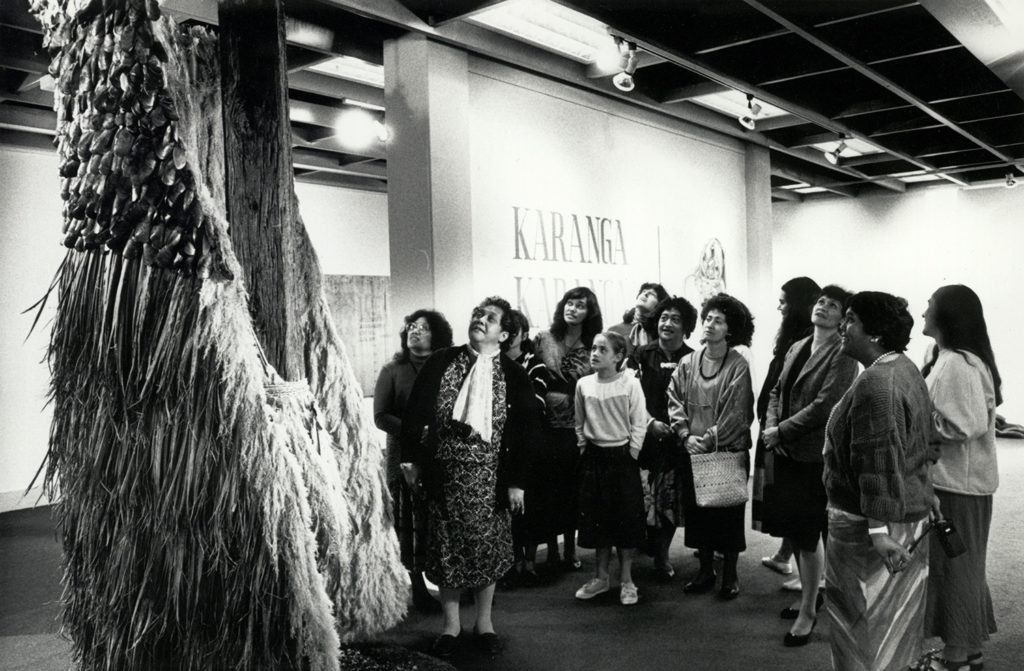ARTISTS Tungia Baker, Ani Crawford, Melanie Cullinan, Kōhai Grace, Patricia Grace, Jolie Marianne Gunson, Kataraina Hetet-Winiata, Hinemoa Hilliard, Wendy Howe, Keri Kaa, Robyn Kahukiwa, Maxine Montgomery, Hana Pōmare, Janet Pōtiki, Diane Prince, Eranora Puketapu-Hetet, Veranoa Puketapu-Hetet, Irihapeta Ramsden, Lee Retimana, Mihiata Retimana, Waireti Rolleston, Rea Ropiha, Ngapine Tamihana Te Ao, Raiha Te Hiko Waaka, Stephanie Turner, Grace Warren CURATOR Haeata RELATED VENUES Gisborne Museum and Arts Centre, 15 April–4 May 1986; Fisher Gallery, 4 May–4 June 1986
Karanga Karanga is a milestone show—the first public-museum show of collaborative works by Māori women artists. It's part of a wider national project, with associated shows at Gisborne Museum and Arts Centre and Pakuranga's Fisher Gallery. Collectively, these three shows present the work of some seventy artists. The Wellington show features fifteen works by twenty-six artists, combining weaving, painting, and sculpture.
The Wellington show is the first to be organised by Haeata, a Wellington Māori women’s art collective established in 1983. Its members include Patricia Grace, Keri Kaa, Robyn Kahukiwa, and Irihapeti Ramsden, all of whom make work for the show. They acknowledge former Wellington City Art Gallery director Anne Philbin—who commissioned the show—as an important figure in their history.
The centrepiece is a giant korowai made by Janet Pōtiki, Patricia Grace, Robyn Kahukiwa, and Kōhai Grace. Named Taranga, after Māui-Pōtiki's mother, it's made from mussel shells, feathers, flax, and toitoi, embodying her korowai, maro and hair. Curving around a central pillar in the Gallery, it is conceived as a poutokomanawa—an ancestral image forming a meeting house's central support pole. Images of it feature prominently in media coverage.
‘The exhibition is called Karanga Karanga because like the karanga—the first call, made by women to visitors to a marae—it is, we believe, the first time Māori women have invited the public to an exhibition of their work’, Janet Pōtiki tells the Dominion.
Karanga Karanga is a response to Te Māori, the 1984 show of Māori taonga that toured the US, generating wider recognition of Māori culture. Te Māori did not include women’s art forms or contemporary work. By contrast, here, Māori women represent themselves, their culture and concerns. The public programme includes demonstrations and weaving workshops.










